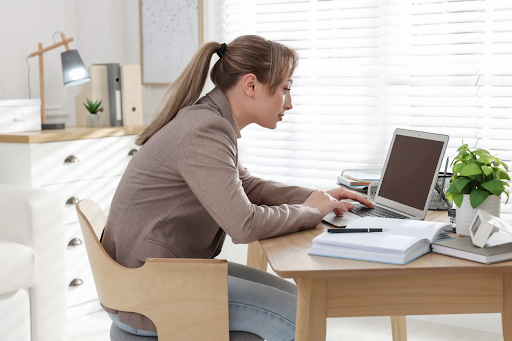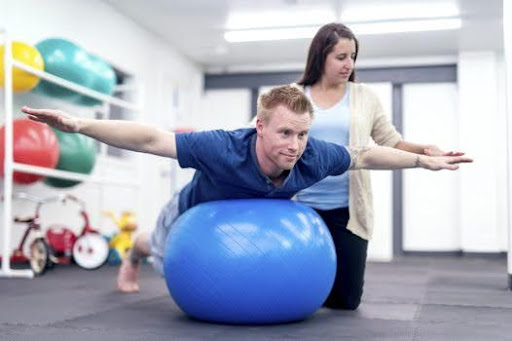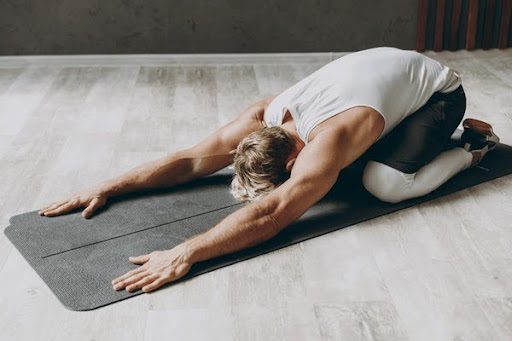Have you ever wondered what a healthy posture would look like? Or noticed someone walking with their back hunched or staring down at their phone with their head forward and thought, “What bad posture this person has?” 🤔
Good posture isn’t just about looking confident, it plays a big role in how your body feels and moves. While practising good posture makes you look confident, poor posture doesn’t just make you look slouched but it can lead to pain, stiffness, and even injuries over time.
Whether you sit at a desk, stand for long periods, or spend hours looking at your phone or laptops, everyday habits can affect your posture. Thankfully, physiotherapy care offers effective solutions to improve posture and alleviate musculoskeletal pain.
Here’s everything you need to know about improving your posture with physiotherapy care.
How Does Poor Posture Cause Pain?
We often overlook how our posture impacts our daily lives. It’s more than just alignment, it’s also a habit (a sense of awareness of how you sit, stand or walk). Extended periods of poor posture can contribute to:
- Neck and Shoulder tightness
- Headaches
- Back tightness and stiffness
- Numbness and tingling sensation
Poor posture forces your muscles to work harder, and over time leads to muscle imbalances, which can result in persistent pain.
How Physiotherapy Can Help Fix Poor Posture?
Physiotherapists specialize in helping people regain their ability to move and function. They use a variety of treatment approaches from hands-on techniques to exercise therapy and ergonomic education to address your health concerns. These approaches work together to relieve pain, promote healthy alignment and prevent future injuries.
Manual Therapy:
- Specialised soft tissue and joint mobilization techniques to improve range of motion and alleviate pain.
- Dry needling therapy where a thin sterile needle is inserted into a myofascial trigger point to reduce muscle tension.
- Instrument assisted soft tissue mobilization (IASTM), cupping and soft tissue flossing to address soft tissue restrictions, improve mobility, and promote healing.
- Advance modalities TECAR therapy and Extracorporeal Shockwave therapy to improve blood flow and facilitate soft tissue healing thus further enhancing recovery.
- Exercise Programs: Desk work and constant phone use has become part of our daily routine in today’s world. A personalized exercise routine is your best defense against poor posture. Strengthening key postural muscles through targeted exercise and practising mindful movement habits throughout the day are essential. The end goal is for you to be able to naturally maintain a healthy posture, without constant reminders from your family, friends or colleagues.
- Ergonomic Tweaks: Small changes to your workspace or home office can significantly reduce stress to your muscles and joints. For example, raising your computer monitor, using a lumbar support pillow, or adjusting your chair height can make a big difference.
Stretching Exercises to Relieve Posture-Related Pain
Movement is key to overcoming poor posture. Begin with these simple stretching exercises which are perfect for your home or office routine.
- Chest Stretch: Stand in a doorway, place your hands on the doorframe, and gently lean forward to stretch your chest and shoulders. https://www.youtube.com/shorts/40BBXdyJdak
- Neck Stretch: Sit or stand tall, tilt your head toward one shoulder, and hold for 15–20 seconds. Switch sides. https://www.youtube.com/shorts/6Tr3GLfySYo
- Child pose Kneel on the floor, keep your palms on top of your thighs, lower your torso between your knees, extend your arms alongside your torso. How to do a Child’s Pose Stretch | Proper Form & Technique | NASM
Strengthening Exercises for Better Posture and Pain Relief
- Scapular Squeezes: Sit or stand tall, imagine you’re holding 2 pans of pizza on each hand like a server and squeeze your shoulder blades together, hold for a few seconds, and release. Shoulder Squeezes – Ask Doctor Jo
- I , T, Y: Lie on your stomach, start with your arms by your body like an I, lift it 5 inches off the floor and hold for 10 seconds, repeat for 5 repetitions and repeat with your arms in T and Y position. Prone Y’s, T’s, & I’s
- Chair Squats: Begin by sitting at the edge of a chair, stand up from sitting and squat until your buttocks touch the chair but not sitting completely. Repeat for 10 repetitions of 2 sets. Cardiac Rehab – Chair Squats
When Should You See a Physiotherapist?
While home exercises can be beneficial, there are times when your aches and pains require professional help. Consult a physiotherapist if you’re experiencing any of the following:
- Persistent pain after rest or exercise.
- Difficulty with prolonged sitting, standing or walking.
- Numbness, tingling or weakness that travel down your arms and/or legs.
- Continued poor posture despite consistent exercise
Conclusion
Good posture isn’t just about sitting or standing straight. It’s about feeling healthy and confident as you go about your daily routine.
Our physiotherapy team can guide you in:
- Correcting postural imbalances
- Relieving chronic pain caused by poor posture
- Strengthening key muscles for lasting support
While physiotherapy provides the tools and guidance, achieving postural improvements requires active participation. Think of it as a collaborative effort, our treatment approaches combined with your consistent practice lead to long lasting results.
If you’re struggling with posture or musculoskeletal related pain, don’t wait until it gets worse. Reach out to a physiotherapist and take the first step toward better posture and a stronger, healthier you.







